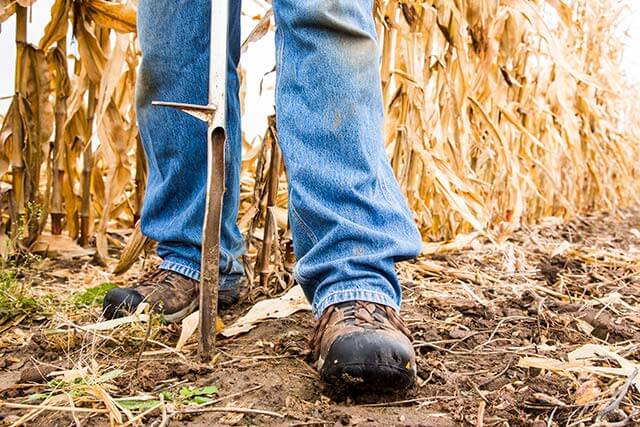Have Confidence in Soil Sampling Results
Apr 22, 2020

MANAGER, SURETECH LABORATORIES
Take accurate soil samples
At SureTech® Laboratories, we always say quality starts in the field. A testing lab can have the best processes and the most advanced quality control. But if there are inconsistencies in the way samples are taken, inconsistent results will occur.
To ensure accuracy, soil samples need to:
- Be taken at the same time of the year.
- Be taken at the right depth (consistently 6 to 8 inches).
- Contain an adequate number of soil cores to accurately represent the area.
- Use the most appropriate sampling method depending on a farmer’s strategy. Most farmers use a grid sampling method, where samples are taken every 2.5 acres. This is advantageous to understanding soil variability in a field or if the farmer is going to do a variable-rate fertilizer application.
If you are basing fertility decisions on poor soil samples, you might overapply fertilizer, which translates into dollars wasted. You could also underapply, resulting in a yield-limiting situation, lost revenue or both.
The consequences of not soil sampling
Soil testing typically accounts for a small percentage of your total cost per acre when you consider seed, fertilizer and crop protection products. (A typical soil test costs about $7 per sample, representing a 2.5-acre grid.) Yet some of the most critical decisions you make during the season are based on that information. If you’re not soil sampling and you’re applying fertilizer, you’re operating blind.
New soil testing method available to further advance lab quality
Two and a half years ago at SureTech, we switched our pH testing procedure from a water-based method to a salt method. This new way of testing helps minimize any seasonal or weather-related effects on pH. Previously, if we had dry weather, a pH test could reflect an artificially lower pH level due to the high salt content in the soil. If we had wet conditions, pH levels might be artificially higher because some of the salt had leached out. Using a salt pH testing method provides more consistent, less seasonally affected pH numbers.
We’re working with the WinField United Innovation Center on several trials to determine what the most advantageous testing options are for farmers. The more data on each acre we can provide, the better the decisions farmers will be equipped to make about optimizing their fertilizer dollars. Talk with your local trusted advisor about the right soil testing process for your fields.
© 2020 WinField United. Important: Before use always read and follow label instructions. Crop performance is dependent on several factors many of which are beyond the control of WinField United, including without limitation, soil type, pest pressures, agronomic practices, and weather conditions. Growers are encouraged to consider data from multiple locations, over multiple years, and be mindful of how such agronomic conditions could impact results. SureTech® and WinField® are trademarks of WinField United.